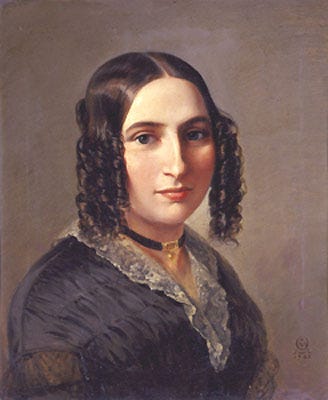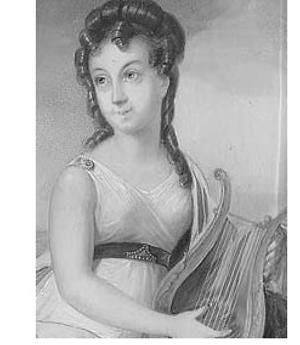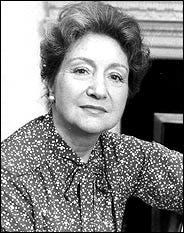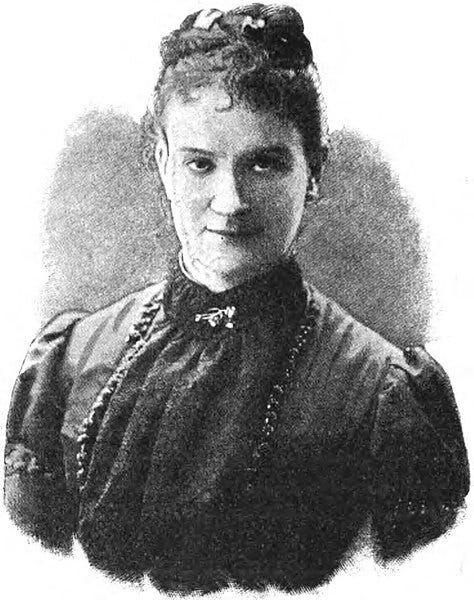Week 21: Women Interpreting Beethoven, Part 2
One pianist's journey to perform the 32 piano sonatas of Beethoven.

Let’s take another look at Dorothea von Ertmann, that pianist with mad skills who premiered Beethoven’s sonatas for him, once he was too deaf to do them justice himself. Here’s the description of Dorothea I shared last week:
“A lofty noble manner and a beautiful face full of deep feeling increases my expectation still further at the first sight of the noble lady; and then as she performed a great Beethoven sonata I was surprised as almost never before. I have never seen such power and innermost tenderness combined in even the greatest virtuosi; from the tip of each finger her soul poured forth, and from her hands, both equally skillful and sure, what power and authority were brought to bear over the whole instrument. Everything that is great and beautiful in art was turned into song with ease and expression!”
Right there, you can see three hallmarks of what developed into a female Beethoven interpretive tradition. First, a dignified, rather than sensuously charming, performance, reflecting the authority of an educated woman. Second, inner tenderness, embodying a role for women as preservers of inner values who were responsive to the soul of the composer. Third, a "singing" style. Beethoven sought such a style, writing the directive "Gesangvoll, mit innigster Empfindung" (“singing, with innermost expression”) in opus 109, dedicated to Maximiliane Brentano.
The pianist-composer Felix Mendelssohn visited Dorothea in 1831. By then she was an old lady, no longer performing, but she played for him. He wrote his sister Fanny, also a wonderful pianist-composer, that "when sometimes she can bring no more tone out of the instrument, and begins to sing in a voice that emanates from the very depths of her soul, she reminds me of you."
Beethoven scholar William Newman singles out three pianists whose playing Beethoven especially admired: John Cramer, Dorothea Ertmann, and Marie Koschak. In the case of Cramer, he and Beethoven had been set up for salon contests, where Beethoven admired how Cramer played his own compositions and improvisations. With the women pianists, Beethoven admired how well they resonated with his own music.
Marie Koschak was born 1794 in Graz, where she stayed as she came of age, marrying a lawyer. But Beethoven’s biographer Thayer writes that she’d wanted to be a composer. Her brother-in-law in Vienna"had at her request shown him for an opinion a fantasia composed by her, but without disclosing the author's identity. Beethoven looked at the piece carefully and said that it was a good deal from one who had not studied composition”. Marie was likely in her early twenties when she wrote the work. She gave up composing “in the interests of her family”. Beethoven then discovered that she was a great pianist. He wrote to her; "We will make a great deal more music. Surely you will play for me the sonatas in F major and C minor, won't you? I have never yet found anyone who performs my compositions as well as you do; and I am not excluding the great pianists, who often have merely mechanical ability or affectation. You are the true fosterer of my spiritual children." By "great pianists" he was undoubtedly referring to those with a professional reputation, his male competitors. Although Koschak remained "amateur," she premiered Beethoven’s Choral Fantasia for piano, orchestra and chorus, opus 80. According to Thayer, "she scored a great triumph”.
A third woman pianist important to Beethoven was Marie Bigot. She served as the pianist at the palace of Count Rasumovsky, where her husband was the librarian and the famous Schuppanzigh string quartet was in residence. Seyfried wrote that there, "everything that (Beethoven) composed was rehearsed hot from the griddle and performed to the nicety of a hair...with a penetration into the most secret intentions of the composer and the most perfect comprehension of his intellectual tendencies."
Marie’s husband reminisced that Beethoven showed the manuscript of his big “Appassionata” sonata opus 57 to her: "Impelled by the striking beginning she sat down at the pianoforte and began playing it. Beethoven had not expected this and was surprised to note that Madame Bigot did not hesitate at all because of the many erasures and alterations which he had made." A 19th century biography of Bigot by Fétis relates; “The melancholy genius of Beethoven found an interpreter in Madame Bigot, whose enthusiasm and depth of feeling added new beauties to those which he had conceived. One day she played a sonata which he had just composed, in such a manner as to draw from him the remark; "That is not exactly the character which I wanted to give this piece; but go right on, if it is not wholly mine it is something better."
In these quotes, I’m hearing the early 19th century tendency to view the interpreter as recreator. Since women were prominent among interpreters, they were influential at the highest levels of the musical event. Fétis goes on to describes Bigot's playing in terms of "depth of feeling" and "character," though. Not in terms of improvising on or embellishing the score – that would have been a more male approach. The "recreation" described would be one of mood and presence, in sympathy with the composer.
There were other remarkable women pianists beside these three. On April 3, 1820, the eight-year-old Marie Blahetka was a sensation in Vienna in a public performance of Beethoven's concerto in B flat.
Then there was Anna de Belleville, who met Beethoven, studied with Czerny, and became an international Beethoven interpreter. These two women became part of a new generation of Beethoven performance after his death, when divergent schools of interpretation for women and men emerged.
Male pianists inherited Beethoven's place in society. They were expected to compose works that took his standard forward. Naturally, many of them, like Chopin Liszt, and Hummel, often featured their own works rather than Beethoven’s. They were all affected by the growing social value placed on "genius" and "immortality". As Beethoven’s image developed into a fundamental example of “immortal genius”, an expectation for 19th century male pianists emerged. They were to be able to play Beethoven in a style portraying powerful genius, while at the same time presenting their own works for comparison. Earlier in the 19th century, male pianists often improvised on Beethoven’s scores or departed from them in mid-stream. They felt justified in doing so, because, as Liszt wrote, "in the domain of the Beautiful, Genius alone is the authority." There’s a great anecdote about Liszt giving a concert in Paris in 1941. He’s doing a duo performance of Beethoven's "Kreutzer" sonata for violin and piano. Right after the fiery first movement, he stops to encourage audience applause. Then he throws in a solo virtuosic fantasy on a popular opera. Presumably he leaves the violinist standing there, being “second fiddle” until Liszt is ready to resume the duo. Later in the century, more emphasis was placed on presenting set masterpieces, but showing one’s own place in the lineage of composers was still important. When the Russian pianist Anton Rubinstein was brought to New York by the Steinway family in 1872, he gave seven “historical recitals” including an all-Beethoven program. The concerts led up to his final recital: an all-Rubinstein program.
For women, the situation was different. Their role was to preserve Beethoven’s music rather than to separate from it. Women energies were instead absorbed by redefining their position during the rise of the middle class. Some in this more entrepreneurial generation now embarked upon professional careers. They took on duties expected of “professional” pianists, such as teaching, organizing tours, and composing. Both Marie Blahetka and Anna de Belleville composed music – Belleville published nearly two hundred works.
In many ways, the nineteenth century was a golden age for female concert pianists; many women played to enormous public acclaim. Nevertheless, ambivalence about women as professional musicians lingered. By the mid-nineteenth century, women had been conditionally accepted as professionals. The average woman should not identify with concert artists – “don’t try to be Rubinsteins in petticoats!” admonished the critic James Huneker to “our girls”.
But if they did succeed in a professional career, a woman pianist should play a "womanly" role. That perception was not entirely imposed by men. Many women took pride in maintaining their tradition as highly feeling, sympathetic, nurturing advocates of art, considering it important to bring these qualities with them into the public world of the professional artist.
Meanwhile, the function of the average woman in music was to be an "amateur", but "amateurs" were gradually demoted in status. Private patrons were no longer a sustaining force; what was needed were "consumers" of the latest musical "products," such as pianos and sheet music. Most women were given a basic training in the popular music of the time, but no more. By the late nineteenth century, it was the professional female pianists who carried on the tradition of the "amateur" pianists of Beethoven's day. They were judged according to female tradition, not in relation to males.
From the beginning to the end of the nineteenth century, the duty of female artists to be helpful advocates of others remained sacred. If you think about it, the still-often-heard idea that a classical pianist must be the “humble servant of the composer” surely arose out of that tradition. Most male piano performers of the nineteenth century, such as Liszt, Chopin and Rubinstein, were more interested in introducing their own compositions. With a few exceptions, such as the male interpreter Charles Hallé and the female composer Amy Beach, a separate tradition for male and female professional musicians was maintained.
Surely the most outstanding 19th century Beethoven interpreter of any gender was Clara Schumann. She was the first person to introduce many of Beethoven's sonatas on public stages, rather than in private salons, and one of the first to play music from memory. She established the tradition that a public recital should include a major work by a "great master," most often a Beethoven sonata. It was Clara who gave Franz Liszt the idea of performing his first Beethoven sonata in public. To her dismay, though, Liszt had no compunctions about embellishing Beethoven, adding trills and cadenzas, doubling octaves, exaggerating tempo changes, or rolling arpeggios. "As he wanted," she wrote with disapproval. Liszt added ten Beethoven sonatas to his concert repertoire, but stopped performing in 1848. Clara continued performing Beethoven for 43 years after that. By the time the next generations of female pianists emerged, including Sophie Mentor, Arabella Goddard, and Teresa Carreño, Clara had firmly established the Beethoven sonatas as standard repertoire.
Women's tendency to function as teachers during the nineteenth century became a means of preserving such female traditions as a "singing" tone. Clara had studied voice herself as part of her training. Eugenie Schumann commented of a lesson with her mother, “She played the first eight bars from the wrist with all notes of equal strength, forte, yet exquisitely mellow in tone, never stiffening the wrist for an instant, and knitting the chords rhythmically together so that the simple piece suddenly took on life and character...my feeling for beauty of touch and rhythm was stirred into life from that moment.”
The rhythm she is talking about undulates gently. This is different from a temperamental rubato. The overall effect is spacious, unhurried, noble, and intimate. Clara also insisted on faithfulness to the notes of the composer in her teaching. As she said to Fanny Davies, "Play what is written; play it as it is written. is al stands there. Her student Adelina de Lara wrote that the "true Schumann tradition" was to play "very calmly, pensively and peacefully, with humility and love helping in a task that is far from easy, for to express beauty through simplicity is harder than any conceivable problem." This style was passed on, eventually reaching female pianists such as Moura Lympany and Dame Myra Hess. It also began to cross over to male interpreters, like the British single-name pianist Solomon.
Sophie Mentor represented a somewhat more flashy and fashionable later 19th century ideal, though still grounded in female tradition. The critic Dr. James Tracey wrote that she was “a woman of greatest beauty and personal charm. Her presence was at once noble and kindly. No pianist ever had that peculiar asset, ‘personal magnetism’, to a greater extent than did Sophie Mentor. She could play the most prodigious difficulties with precision, ease and effectiveness. Her scales and arpeggios were marvels of agility, grace and musical finish. Her octave and chord passages were strong and resonant, but without any suggestion of pounding. She seemed to know the point at which the maximum sonority of the piano was reached and she never passed this point into the regions of cacophony...she played from memory - rarely missing a note.” (I really try not to hate Sophie Mentor.)
Woe to women who went their own way outside that limit. There was Anna Mehlig, a student of Liszt who gave the American premiere of his second piano concerto. Dr. Tracey wrote, "She was tall and ungainly in appearance and her playing was decidedly masculine. At her concerts I never felt myself charmed or 'carried away' by her playing, as it seemed to me to lack refinement, finish and sincerity. She was considered a leading exponent of the Stuttgardt school of pianoforte playing, which was marked by the conspicuousness of the technical means used to reach an artistic end. Her intellectual achievements were evident and she was courted and respected by musical people everywhere. She invariably played with her notes before her."
And still she persevered, eventually gaining widespread rave reviews.
In Part 3, I’ll pick up this story in America, and tell you about the first two pianists to perform the complete 32 Beethoven sonatas in public in New York City. Until then, you can speculate on their gender! I’ll also tell you a bit about corsets, Darwinism, recording contracts and more. Meanwhile, have a great week!












